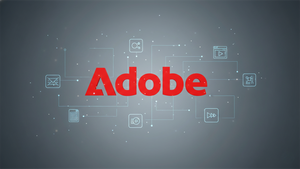Tariff uncertainty is creating electronics supply chain déjà vu, with lead times impacted most dramatically. Disruption this time around is outpacing what we all experienced during the pandemic, new Supplyframe Commodity IQ intelligence reveals.
This year saw the highest-ever reading in the history of the Commodity IQ Lead Time Index, which in April 2025 reached a score of 166.6, well above the baseline of 100. This recent spike in lead times is even more severe than the increase seen late in 2020, nine months after COVID-19 was officially declared a pandemic. That trend continued throughout 2021 and 2022, when the Commodity IQ Lead Time Index hit 146.7 in January of 2022 – its previous record high. And now the index is projecting that lead times from March to June 2025 will rise a stunning 75%.
“Today’s lead time surge shows the market impact of the trade wars is happening faster, within a shorter duration, and with greater intensity than what we experienced during the pandemic,” said Supplyframe CEO and founder Steve Flagg. “Companies have tried to minimize their tariff exposure the best they can by placing forward orders and struggling to diversify away from China. But these approaches will soon reach their limits. Once businesses consume their forward inventory, there’s limited buffer from reduced product availability and higher prices.”
Supplyframe monitors and reviews published component lead times from over 600 million parts across 180 global distributors and 27,000 suppliers as part of its broader Design-to-Source Intelligence (DSI) Network. The Commodity IQ Lead Time Index, one of several Supplyframe Commodity IQ indices, reflects actual lead times as experienced by commodity managers in the DSI network who manage over $120 billion in annual direct spend.
This index and others from Commodity IQ compare new data against a baseline score established in late 2019 before the pandemic. The index gathers its data from actual at-volume lead-time quotes reported by commodity managers on Supplyframe's DSI network. It does not rely on publicly reported lead time data from supply chain participants.
Moreover, this analysis is derived from catalog providers and reflects small-quantity orders that have greater sensitivity to volume changes. Therefore, index results may differ from lead-time data published elsewhere, but trends represented here are directionally correct.
Our recent analysis compares Supplyframe’s latest insights from 2025 surrounding new tariffs and trade policies to data the company captured during the COVID-19 pandemic, compared to a baseline established in the last quarter of 2019.
The new, unprecedented lead-time surge could portend a parts shortage
In terms of sequential percentage changes, the Supplyframe Commodity IQ Lead Time Index revealed an 80% increase in December 2019. This was an early warning sign of the pandemic-era parts shortages that would soon arise. Interestingly, the Commodity IQ Lead Time Index score increase of 85% from March to April 2025 is larger yet, suggesting that lead time disruptions in 2025 could be more intense than the initial lead time impacts businesses experienced in 2019.
While the sharp increase in delivery times for interconnect commodities, such as connectors and sockets, has contributed significantly to the 2025 lead-time surge, even when these parts are excluded, the Commodity IQ Lead Time Index rose by the largest margin in history in April 2025.
A look at capacitors, a common bellwether commodity, paints the picture. Lead times for this category experienced the second-largest sequential increase in the Supplyframe Commodity IQ Lead Time Index’s history – skyrocketing by nearly 43% between March and April 2025.
Inventory levels are dropping at the same time that demand is rising
Many lead time increases are a result of rising demand in Q2 2025, as businesses load up on key electronic commodities in an attempt to avoid potential shortages in the coming months. At the same time, many businesses continue to invest in AI services, which rely on complex data center configurations requiring specialized hardware and systems to handle massive data processing, accelerated computing, and efficient power and cooling management for AI applications.
The Supplyframe Commodity IQ report in March 2025 highlighted significant drops in the Commodity IQ Inventory Index, which dove 29 points to half of the 2020 index baseline. This signals contraction across the electronics supply chain and potential shortages on the horizon.
Supply of components such as high-speed connectors and programmable logic devices is already facing constraints, and low stockpiles have led to a drop in the Supplyframe Commodity IQ Inventory Index, which in April 2025 was sitting at 51.1 – well below the 100 baseline.
The Commodity IQ Inventory Index has fallen to lows not seen since the pandemic. From November 2024 through April 2025, the inventory index saw the lowest scores in its history.
Prices tend to increase when inventory gets lower and shortages emerge
History shows that low inventory can lead to higher prices. Five months after the Commodity IQ Inventory Index hit prior lows in May, June, and July of 2021, there were increases in the Commodity IQ Price Index, which saw a 6.5% rise in Q4 2021 and a 14.1% jump in Q1 2022.
This level of price hikes hasn’t yet taken hold across electronics components in the current tariff environment. But the Price Index is already showing price increases for microcontrollers and microprocessors, which are set to rise 14% sequentially in Q2 of 2025, and Supplyframe’s preliminary forecast for July indicates the potential for a 6% increase for next month.
Changes in inventory and demand could set the table for higher prices in additional categories.
Employing real time market intelligence is more important than ever amid tariff disruption
Shifting trade policies are also creating other ripple effects across the global electronics value chain. For example, a new report from PYMNTS Intelligence indicates that one in four product leaders are switching their product designs, pricing, or go-to-market strategies in a move that highlights a shift away from long-term investments and toward short-term firefighting tactics.
While many experts agree on the potential for shortages in the future, many emphasize that the “bullwhip effects” are less chaotic than they were during the pandemic. However, it could take six to 12 months before we see all of the results of the tariffs’ impacts.
Manufacturers that subscribe to external market intelligence will be better positioned to spot emerging trends and more agile in the face of growing uncertainty and market disruption.
“Tariffs are changing the game for companies across key sectors that rely on electronic components to power their products,” said Flagg. “But tariffs are just one of the many risks that supply chains face – and yet another reason real-time intelligence has become so crucial.”
To download and read the full Supply Chain Déjà Vu report, click here.
About Supplyframe
Supplyframe’s unmatched industry ecosystem, and pioneering Design-to-Source Intelligence (DSI) Solutions, are transforming how people and businesses design, source, market, and sell products across the global electronics value chain. Leveraging billions of continuous signals of design intent, demand, supply, and risk factors, Supplyframe’s DSI Platform is the world’s richest intelligence resource for the electronics industry. Over 12 million engineering and supply chain professionals worldwide engage with our SaaS solutions, search engines, and media properties to power rapid innovation and optimize in excess of $150 billion in annual direct materials spend. Supplyframe is headquartered in Pasadena, Calif., with offices in Austin, Belgrade, Grenoble, Oxford, San Francisco, Shanghai, and Shenzhen. To join the Supplyframe community, visit supplyframe.com and follow us on LinkedIn, X, Instagram, and YouTube.
View source version on businesswire.com: https://www.businesswire.com/news/home/20250624189888/en/
Contacts
Media Contact
Ami Atha
PRforSupplyframe@bospar.com






